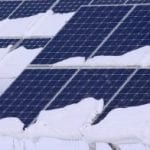Northern Optimist
New Member
- Joined
- Aug 20, 2022
- Messages
- 18
Hi, Bit of a head scratcher if anyone can help. Apolgies if too much info.
North Wales (UK) mountain smallhold(homestead) surrounded by forest. Picked the only spot open from East to West on a southerly aspect with no obstructions, and put my solar array in that field on a trailer sheltered to the North. Only problem is that it is 75m from the house. 25-35m directly toward the house from array is a converted fornerly refridgerated lorry back (no chassis) used as a workshop . In an ideal world the batteries and inverter would sit there as it's already insulated and I'ld like another consumer unit in the workshop. I could put them in the trailer if necessary as I am told it's best to keep dc lengths to a minimum but would prefer not to.
When I've run some online calcs, results are surprising. It seems that a 10mm 2 core swa dc connection to the inverter/batteries at the house gives the best voltage drop percentage at 0.68% based on voltage of 1056v at 20 amps. If I were to put the inverter/batteries in the workshop and split the run 30m DC 1056v 10mm swa & 40m AC 230v 25mm swa I would get 0.64% and 1.54% respectively. AC all the way at 25mm gives 3.09%.
To make this work I would need to put the 22 48v panels in series for the voltage, but the cost of cabling would be massively reduced. The one downside of the direct to house connection would be no AC consumer unit at the workshop.
Have I got any of this right, as it seems contrary to what I had previously thought I understood and I don't want to opt for a saving that ends up biting me in the rear end.
Thanks in advance for constructive comments.
North Wales (UK) mountain smallhold(homestead) surrounded by forest. Picked the only spot open from East to West on a southerly aspect with no obstructions, and put my solar array in that field on a trailer sheltered to the North. Only problem is that it is 75m from the house. 25-35m directly toward the house from array is a converted fornerly refridgerated lorry back (no chassis) used as a workshop . In an ideal world the batteries and inverter would sit there as it's already insulated and I'ld like another consumer unit in the workshop. I could put them in the trailer if necessary as I am told it's best to keep dc lengths to a minimum but would prefer not to.
When I've run some online calcs, results are surprising. It seems that a 10mm 2 core swa dc connection to the inverter/batteries at the house gives the best voltage drop percentage at 0.68% based on voltage of 1056v at 20 amps. If I were to put the inverter/batteries in the workshop and split the run 30m DC 1056v 10mm swa & 40m AC 230v 25mm swa I would get 0.64% and 1.54% respectively. AC all the way at 25mm gives 3.09%.
To make this work I would need to put the 22 48v panels in series for the voltage, but the cost of cabling would be massively reduced. The one downside of the direct to house connection would be no AC consumer unit at the workshop.
Have I got any of this right, as it seems contrary to what I had previously thought I understood and I don't want to opt for a saving that ends up biting me in the rear end.
Thanks in advance for constructive comments.




